The Laboratories for Solar Energy Technology deal with fundamental as well as current questions of solar energy technology, especially in the areas of solar heating and cooling, solar collectors and photovoltaic applications. In the practical trainings of the Bachelor's degree programme "Energy Technology and Renewable Energies" as well as the Master's degree programme "Renewable Energy Systems", experiments on solar water heating or basic principles of optical properties of solar materials are carried out.
The laboratories are integrated into the Institute for New Energy Systems (InES), where all research activities in the fields of "Domestic Energy Systems" and "Industrial Energy Systems" are combined. The application-oriented research projects are mainly carried out in cooperation with medium-sized industrial partners as well as with research institutes and partner universities. Furthermore concerning the electrical aspects for the use of renewable energies, students can learn more about wind power simulation and off-grid photovoltaic systems.
Laboratory for Renewable Energies / Solar Energy Technology (G313/ C026)
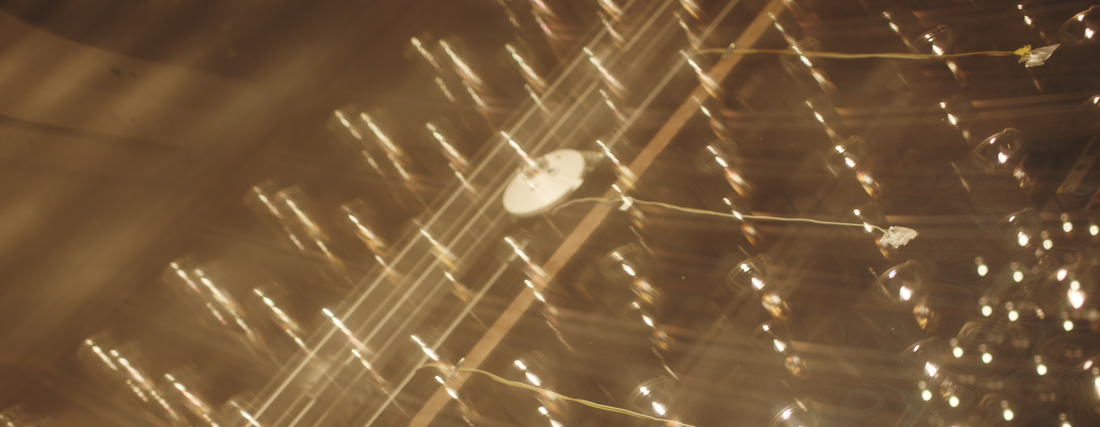
Laboratory equipment and activities
- Testing of solar thermal energy systems
- Application possibilities of photovoltaic systems
- Use of solar thermal energy for sorption-supported air conditioning
- Research on conceptual and construction-related optimization potential of solar collectors
- Development of new materials for solar collectors and optimization of their manufacturing processes
- Measurements of solar thermal collectors according to standard specifications
- Application possibilities of off-grid network systems
- Simulation of wind power (laboratory set-up)
- Experiments on e.g. water heating via solar energy or producing of electrical power via photovoltaic modules for domestic households
- Energy policies and economics
- Energy storage
- Domestic Energy Systems
- Energy distribution and grid connection
- Wind power
- Selected topics of physics
The sun simulator by Mencke & Tegtmeier is primarily used to measure the performance and serviceability of thermal solar collectors in accordance with DIN EN 12975-2. The sun simulator is used to examine the effects of solar radiation on the performance of solar collectors under continuous laboratory conditions, regardless of time of day or season, so results can be reproduced. As part of their vocational training, students are taught in practical courses for instance how to use different types of temperature measurement equipment for a solar thermal collector by means of indoor measurement according to standard specifications. Furthermore, due to the stable and reproducible irradiation conditions, the performance of solar collectors can be tested in order to proof that their characteristics meet standard specifications, which are for example required in research projects.
Simulation software Polysun (Vela solaris)
The simulation software Polysun by Vela solaris is used for the dynamic, time-step-based calculation of solar thermal systems. It offers a selection of basic system configurations ranging from small solar systems in single-family homes to more complex systems for apartment buildings, heating networks and process heating systems. The preconfigured systems can be adapted and optimized to the respective conditions by changing the parameters (e.g. collector type, collector surface, storage tank volume, control settings). As a result, reports and graphs are available which allow an evaluation of the energy flows and temperatures in the system as well as the economic efficiency. Based on a real example, the students carry out a comprehensive evaluation of a solar thermal system in the practical course and compare the results with measured values from the real system.
Microgrid Software HOMER Pro® (HOMER Energy)
The HOMER Pro® microgrid software by HOMER Energy is the global standard for optimizing microgrid design in all sectors, from village power and island utilities to grid-connected campuses and military bases. HOMER is a simulation model: it attempts to simulate a viable system for all possible combinations of the equipment that students wish to consider, e.g. HOMER simulates the operation of a hybrid microgrid for an entire year, in time steps from one minute to one hour. Furthermore, HOMER facilitates the comparison of thousands of possibilities in a single run. This allows students to see the impact of variables that are beyond their control, such as wind speed, fuel costs, etc. and understand how the optimal system changes with these variations.
Collector testing facility (PSE AG)
In September 2020, the test set-up will be installed on the rooftop over laboratory G313. For the performance testing according to the EN 12975-2 and ISO 9806:2013 in steady state method. Two solar thermal collectors could be examined in parallel with the outdoor collector testing facility. For accurate steady state measurements, stable “steady state conditions” are a prerequisite, although some factors like the irradiation as well as the surrounding air temperature cannot be controlled. The high quality equipment installed controls all other parameters.
For the measurement of the steady state method, the use of a tracking system is necessary, as it offers the possibility to test the performance (according to the steady state method) during the entire day and not only during some hours around noon. The tracking keeps the solar thermal collectors perpendicular to the sun. The performance test procedures for thermal collectors require an evenly distributed air flow collector surfaces. Therefore, a ventilation unit is installed at the lower edge of the collector test platform.
With this test set-up, the functionality of a solar thermal system to produce warm water for domestic households can be demonstrated to students in the practical course solar energy technology in a compact and mobile design.
The test stand contains all essential components: the collector, heating up the fluid flowing within, absorbs solar radiation. This fluid is led through the hot water tank via a circling pipe heat exchanger transferring the heat to the service water within the tank. After the heat is transferred, the cooled solar fluid is pumped back to the collector and the process starts again.
The components in the loading circuit are supplemented by the necessary measuring technology (temperature, flow rate, volume flow) to control the process and safety devices (safety valve, diaphragm expansion vessel).
Thermosiphon systems use production from solar energy according to the principle of the “thermosiphon”. The thermosiphon is a passive design without any versatile parts that enables heat exchange by using natural convection in a closed fluid circuit due to different specific densities of water at different temperatures. The water heated in the collector rises to the storage tank because of its lower specific gravity while at the same time colder water is driven downwards to the collector again. This simple principle is used especially in warmer countries for hot water domestic production due to the frost-free winter months. These systems are inexpensive, reliable and can be operated with low maintenance.
In the course of their vocational training, students will be taught the mode of operation by the thermosiphon installed on the rooftop, getting to know the differences between the heating of hot domestic water in comparison to a classic solar thermal system concerning e.g. used media, location and temperature levels.
High-quality measurements of the solar radiation are increasingly becoming the focus of research and development work, serving as a basis to understand the technical usability of locally available solar radiation. Implementation-oriented examples are therefore solar thermal collectors, photovoltaic applications, solar thermal power plants and the passive use of sunlight in residential and office buildings. The measuring system installed on the rooftop consists of two pyranometers to determine non-directional diffuse and total global solar radiation. In addition, a pyrheliometer is installed which measures only direct radiation emitted by the sun, due to its small opening angle of 5°. Due to the installation on a precise GPS positioned tracker, the measuring equipment is able to follow the position of the sun exactly.
The meteorological station is used for the local acquisition of weather data such as temperature, air pressure, humidity, wind direction and speed, global radiation and precipitation. This data is a valuable contribution to the teaching content of the student’s practical courses and research projects
Stand-alone systems, also known as off-grid systems, are self-sustaining devices for power supply that are implemented without any connection to a public power gird. These systems are used where a connection to the local power grid is either not possible or not economical. In order to provide continuous energy, this energy must be stored by using accumulators. Rising costs for fuel (including transport e.g. to a mountain hut) and declining off-grid-system prices make renewable energy sources more economical.
In order to provide all relevant details concerning a photovoltaic set-up to the students in practical courses, one single polycrystalline module is installed on a frame structure. The inclination angle can be varied between 30°, 45° and 60°. This set-up could be used to determine certain electrical parameters such as current and voltage measurements and MPP (maximum power point) at different radiation parameters. In addition, the effects of shading on the efficiency of the PV panel can be simulated.
The laboratory test stand enables the investigation of modern wind turbines with "double-fed asynchronous generators". The wind can be emulated realistically with the servo machine test stand and the "WindSim" software. The PC connection ensures convenient operation and visualisation during the experiments. The accompanying multimedia course "Interactive Lab Assistant" imparts the theoretical knowledge, supports the execution of the experiments and the evaluation of measurement data. The learning content for the students includes the construction and mode of operation of modern wind turbines, the development of the physical basics "From wind to wave" as well as getting to know different wind turbine concepts. The construction and commissioning of a double-fed asynchronous wind generator as well as the operation of the generator under changing wind strengths and regulation of the output voltage and frequency in addition to the determination of optimal operating points under changing wind conditions represent further contents of the practical course.
The spectroscopy test stand is used to determine the transmittance of transparent collector covers and the degree of absorption and emission of absorbers over the entire range of solar radiation. Another application is the determination of optical parameters of transparent and opaque materials (reflector materials, windows, transparent plastics, selective absorber coatings).
Within the scope of the practical experiments, the students will be introduced to the topic of solar radiation, energy conversion and the wavelength ranges of visible light and infrared radiation. In addition, an understanding of the functional principle of optically "active" coatings is built up (processes, characterisation). In the various experiments, samples of different commercially available solar coatings can thus be measured and the difference between technically high and low quality coatings can be demonstrated. The wavelength range between 180nm and 2,500nm is used for practical illustration of the entire bandwidth of the materials used.
Standard test procedures according to EN 12975-2 and ISO 9806:2013 in the "steady state method" can be carried out simultaneously on 2 collectors with the solar tracker installed on the roof surface and tracking the position of the sun.
In addition to sound theoretical training, practical "experience" of the systems and their processes is extremely important in solar energy technology. Through their own experiments in small groups, the students gain a deeper insight into the interaction of the components, the monitoring and control of the system, the various process parameters and their significance for the overall process. In addition, different modes of operation or malfunctions can be simulated and their effects investigated.
Various components of solar thermal collectors can be characterised, exchanged and combined. The solar tracker enables students to get to grips with different measuring devices and to become familiar with the processing and evaluation of measurement data. In addition, the example of the test stand can be used to teach content on standards and standard test conditions and to demonstrate their importance for the development of new technical devices.
Laboratory management and team
Phone: +49 841 9348-2761
Room: A115
E-Mail: Daniel.NavarroGevers@thi.de
Prof. Dr.-Ing. Wilfried Zörner
Phone: +49 841 9348-2270
Room: A222 S407
E-Mail: Wilfried.Zoerner@thi.de
Dipl.-Ing. (FH) Leslie Bauer
Phone: +49 841 9348-4410
Room: C026
E-Mail: Leslie.Bauer@thi.de

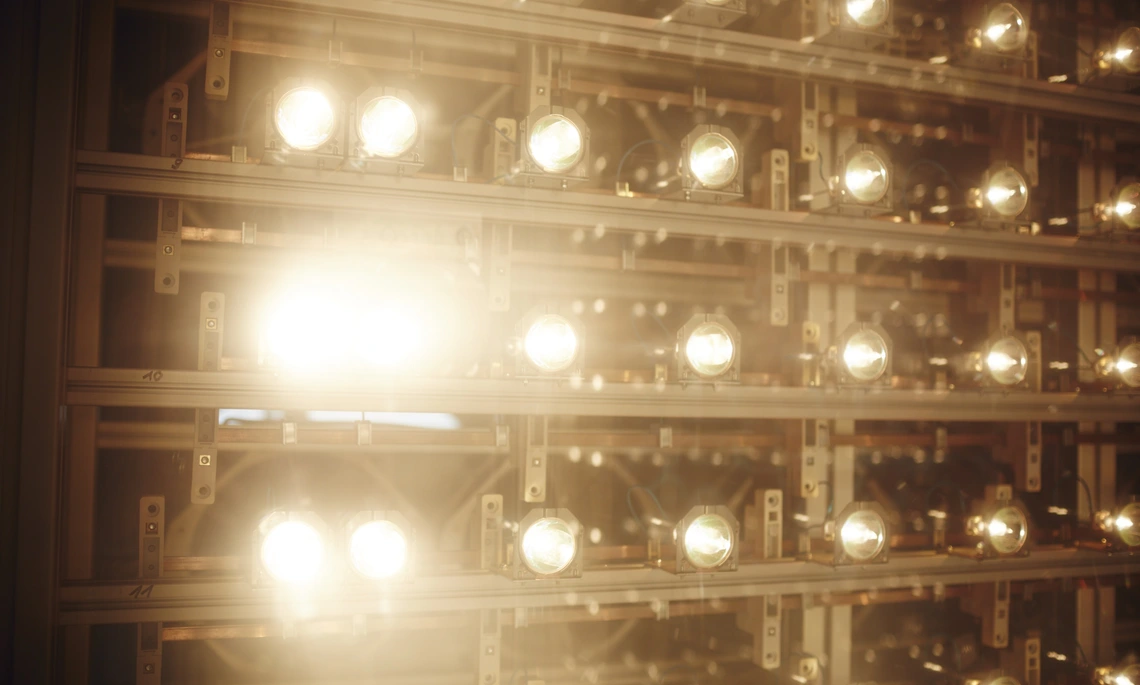
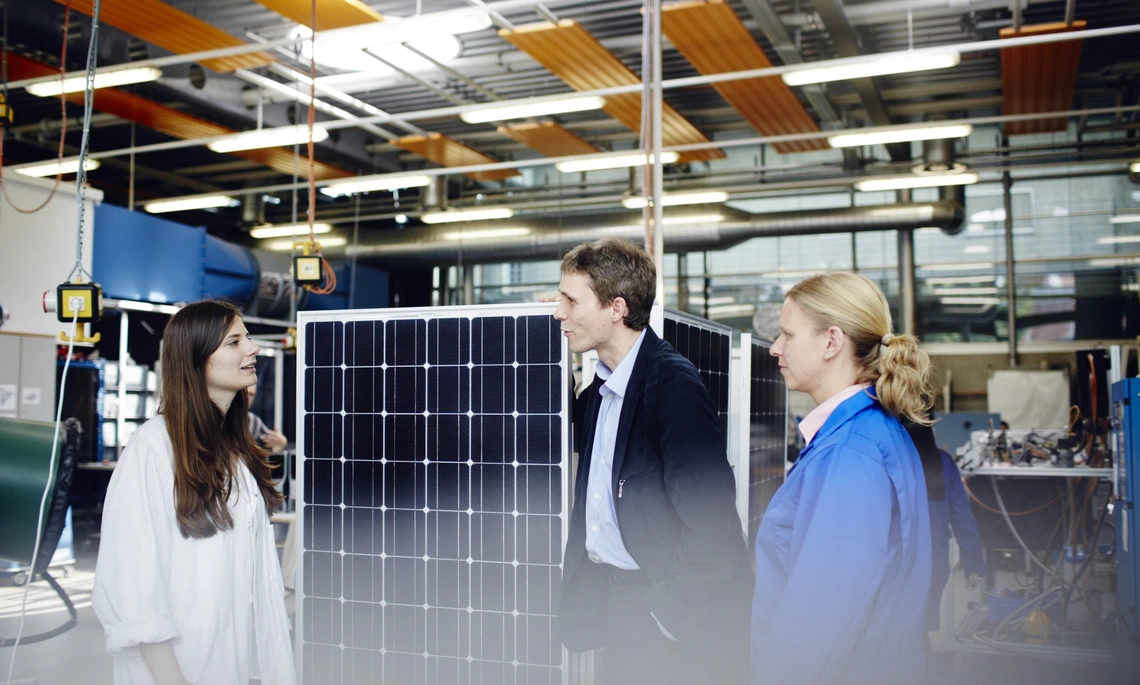
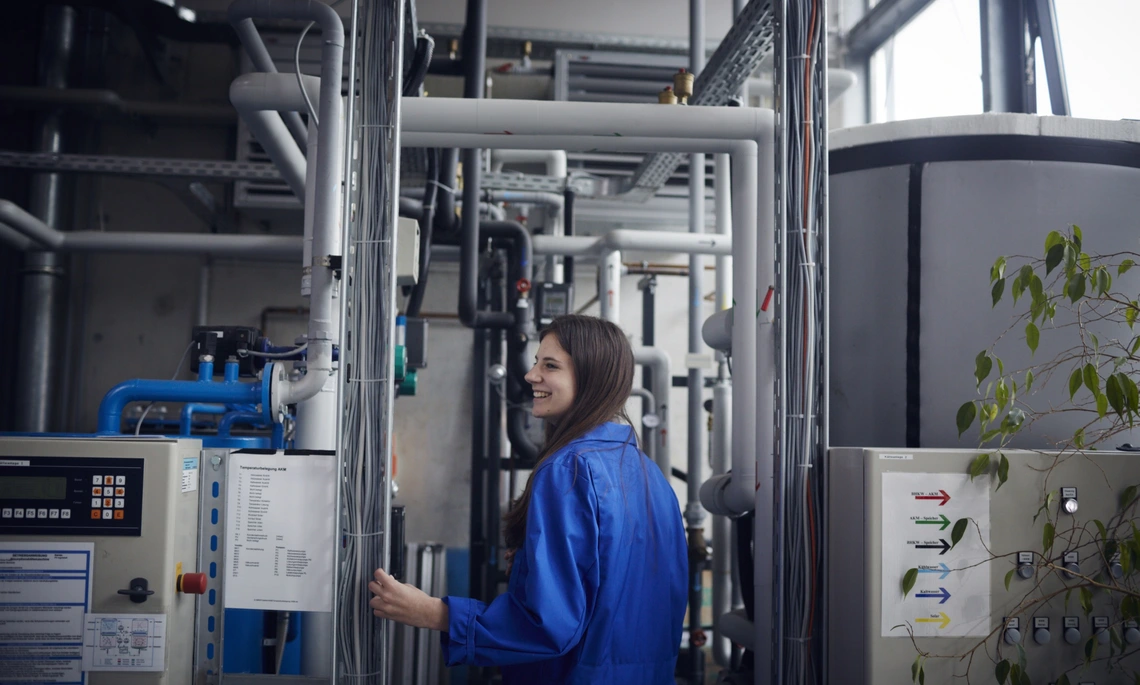
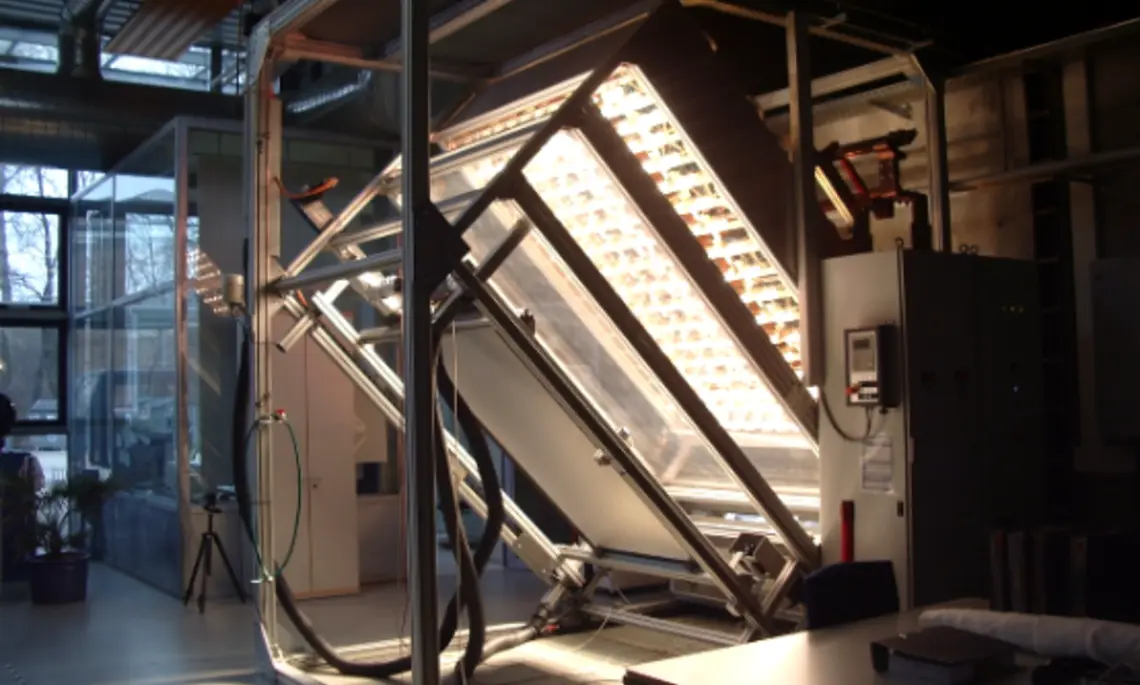
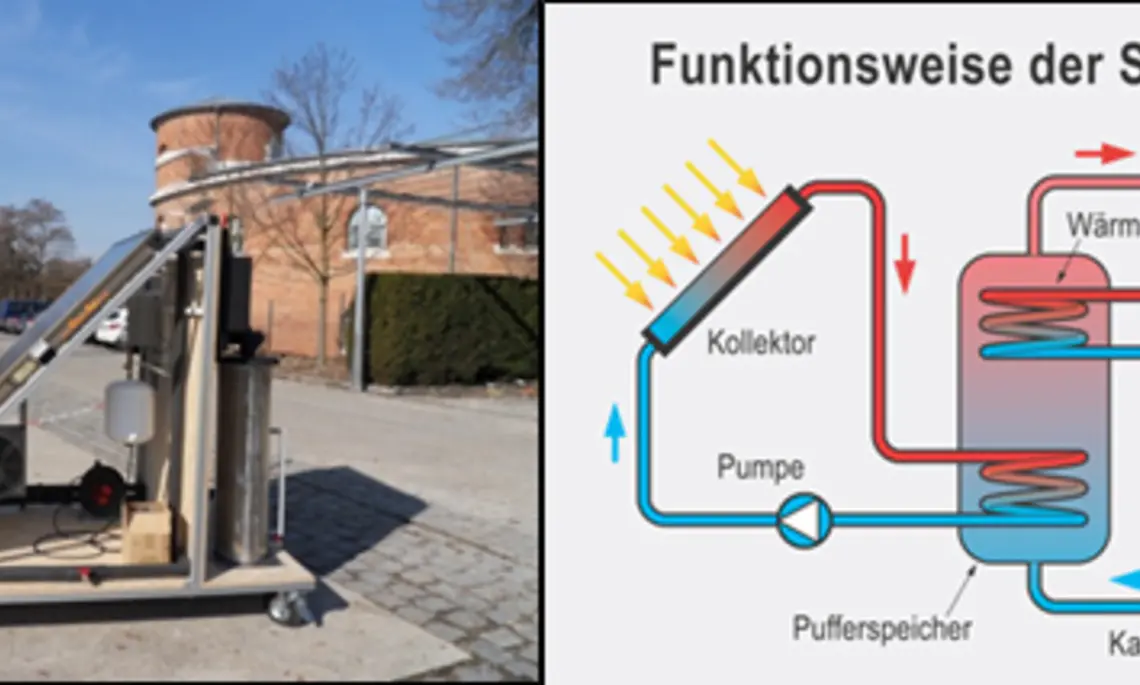

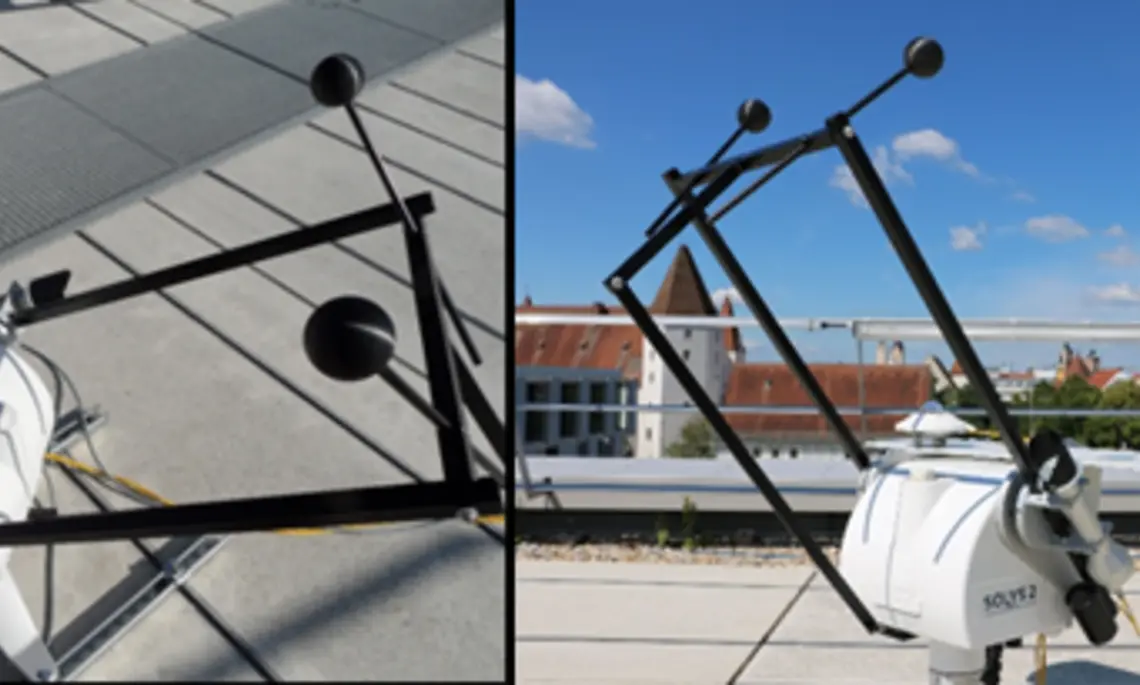
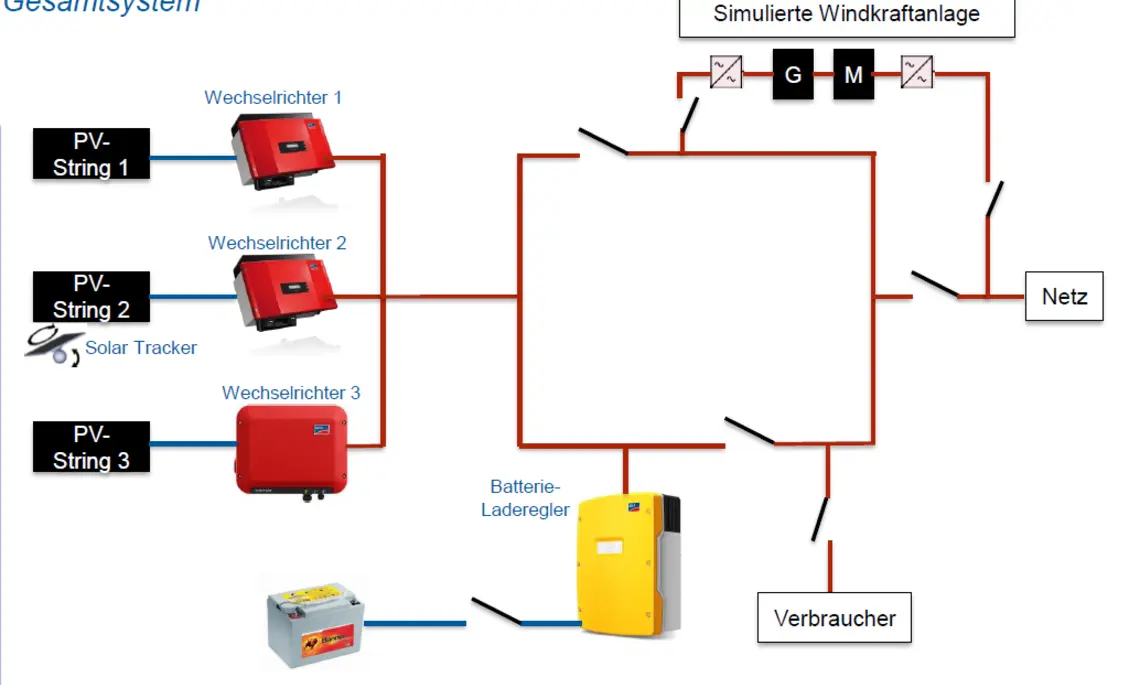
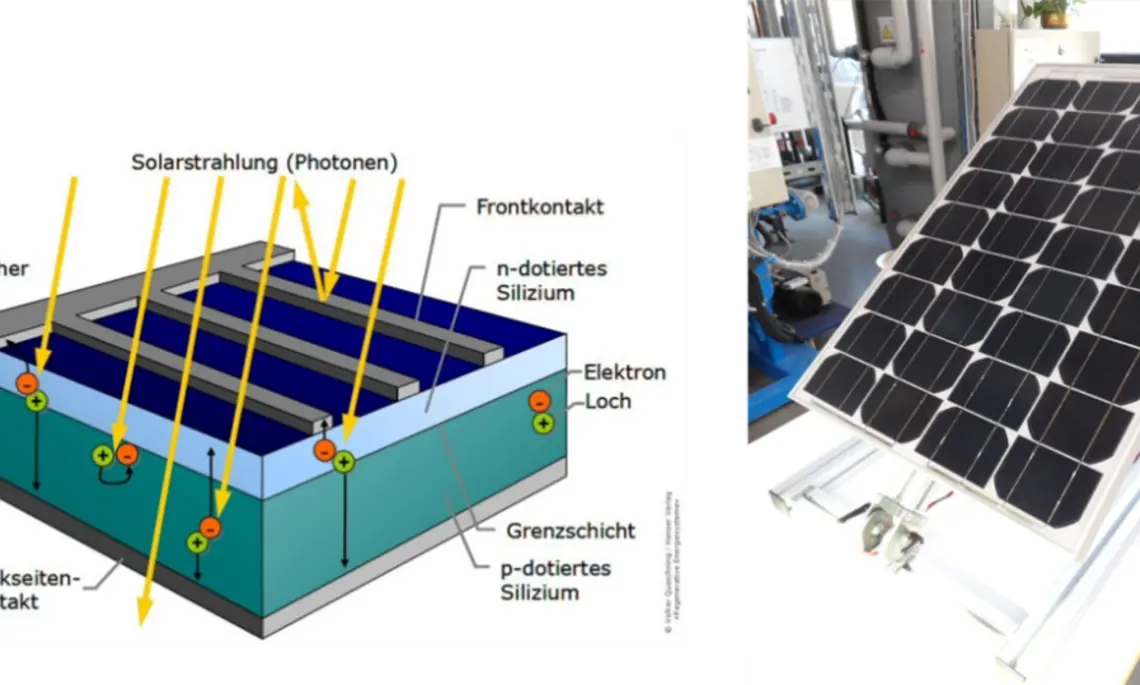
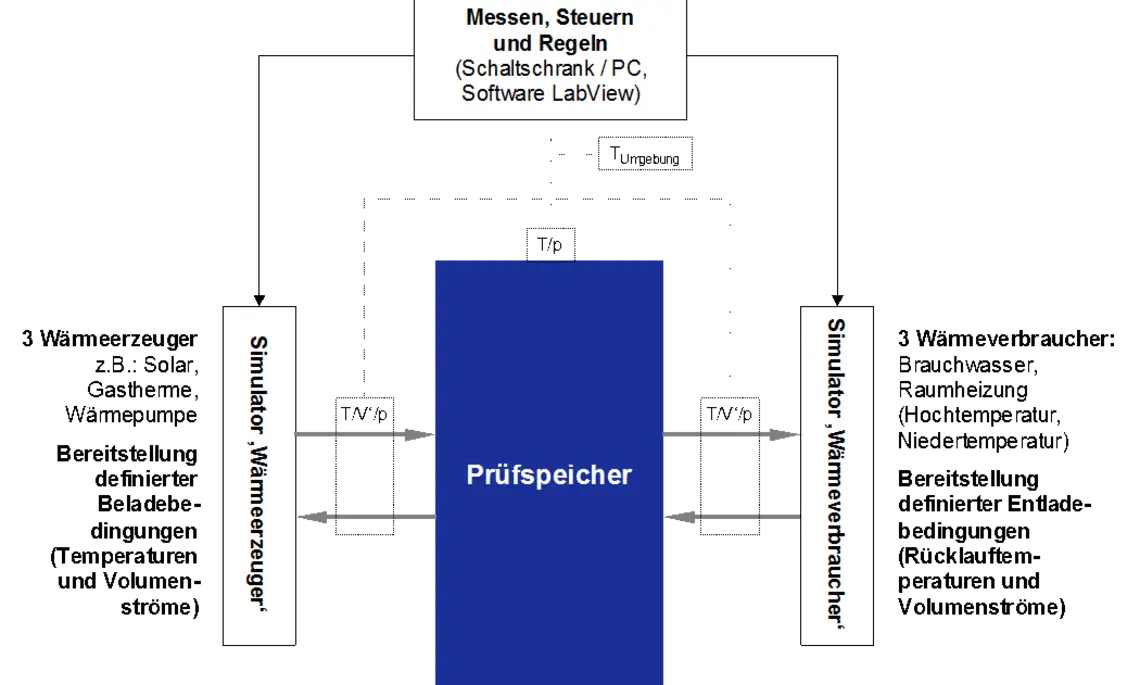

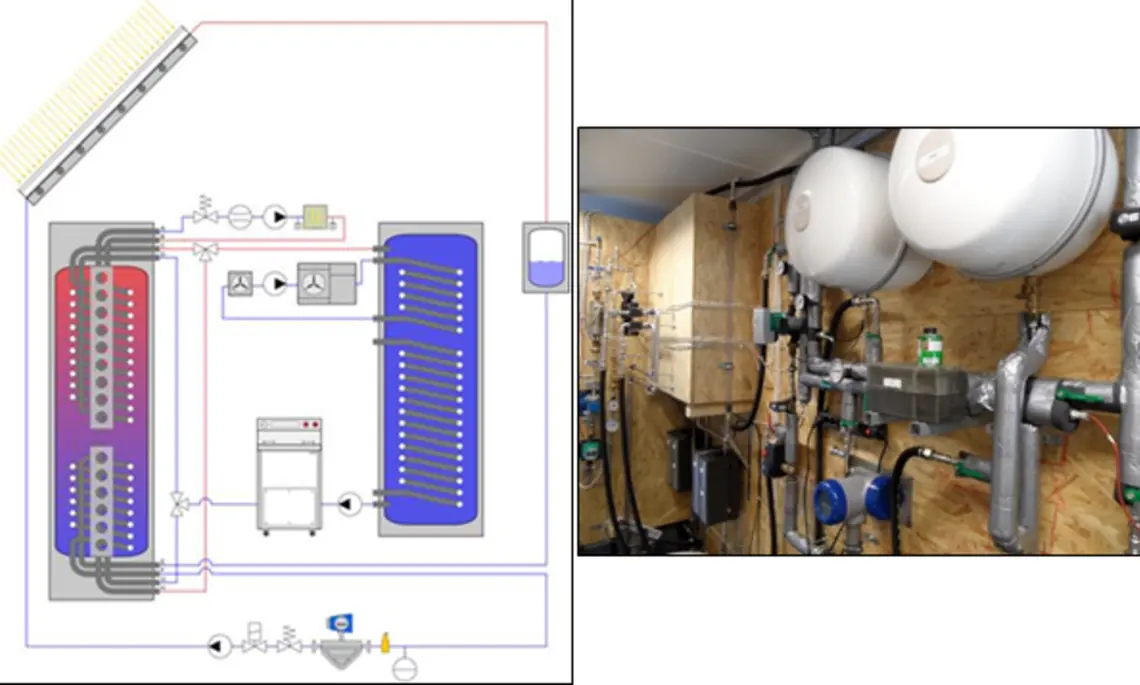
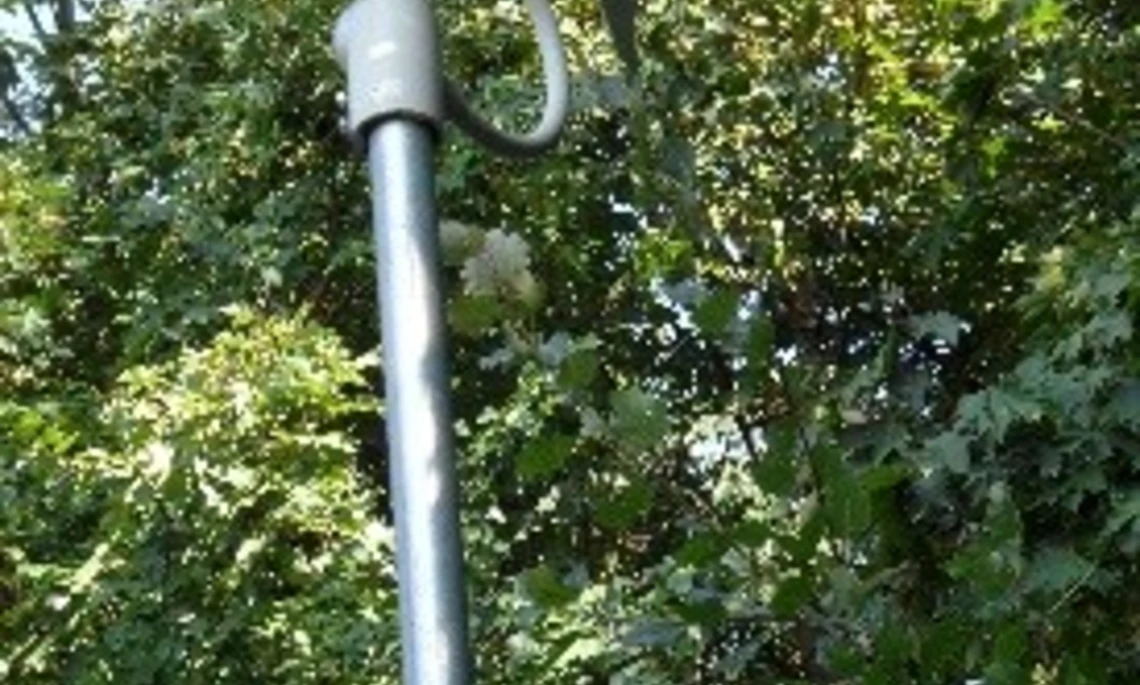
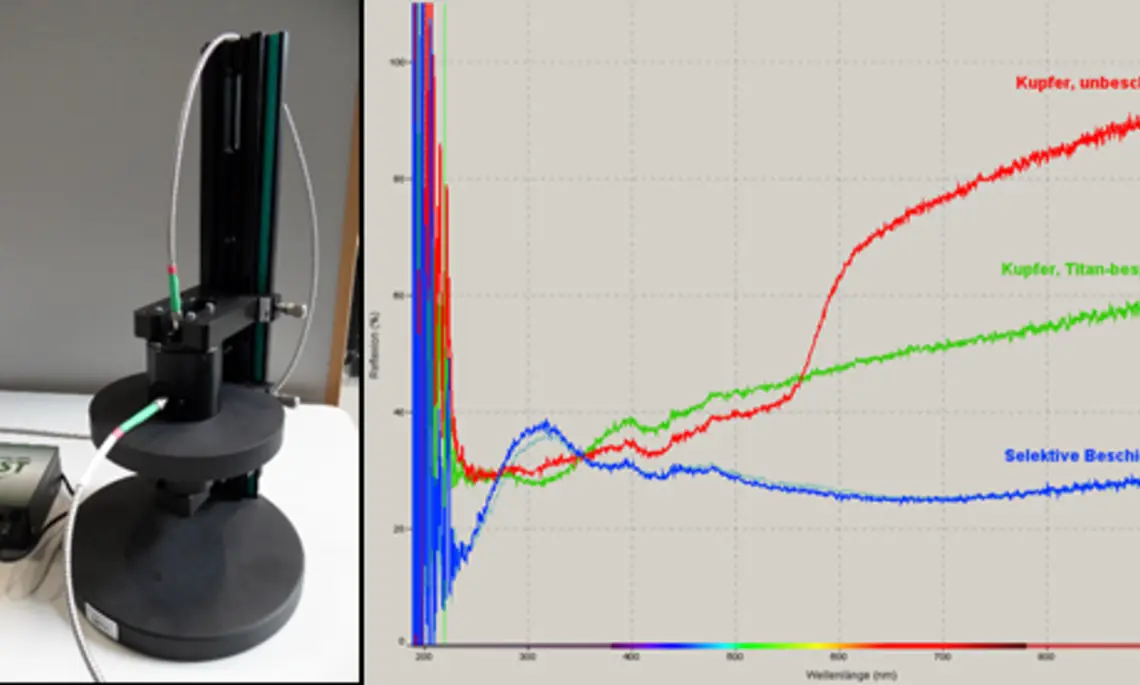
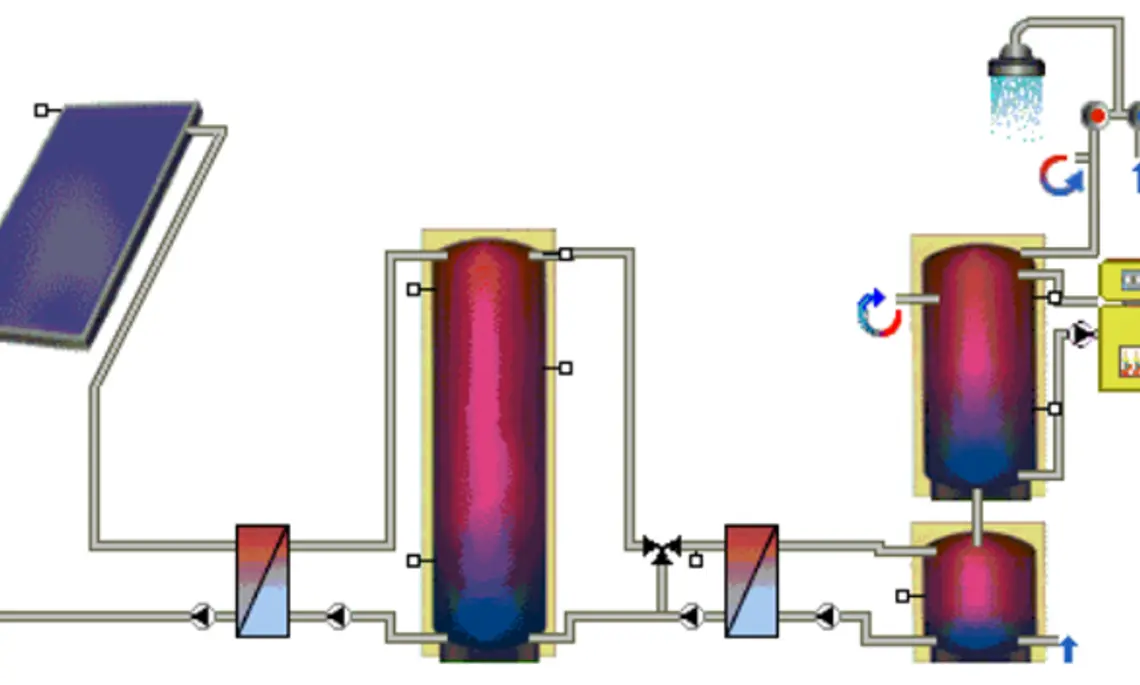





![[Translate to English:] Logo Akkreditierungsrat: Systemakkreditiert](/fileadmin/_processed_/2/8/csm_AR-Siegel_Systemakkreditierung_bc4ea3377d.webp)








![[Translate to English:] Logo IHK Ausbildungsbetrieb 2023](/fileadmin/_processed_/6/0/csm_IHK_Ausbildungsbetrieb_digital_2023_6850f47537.webp)


